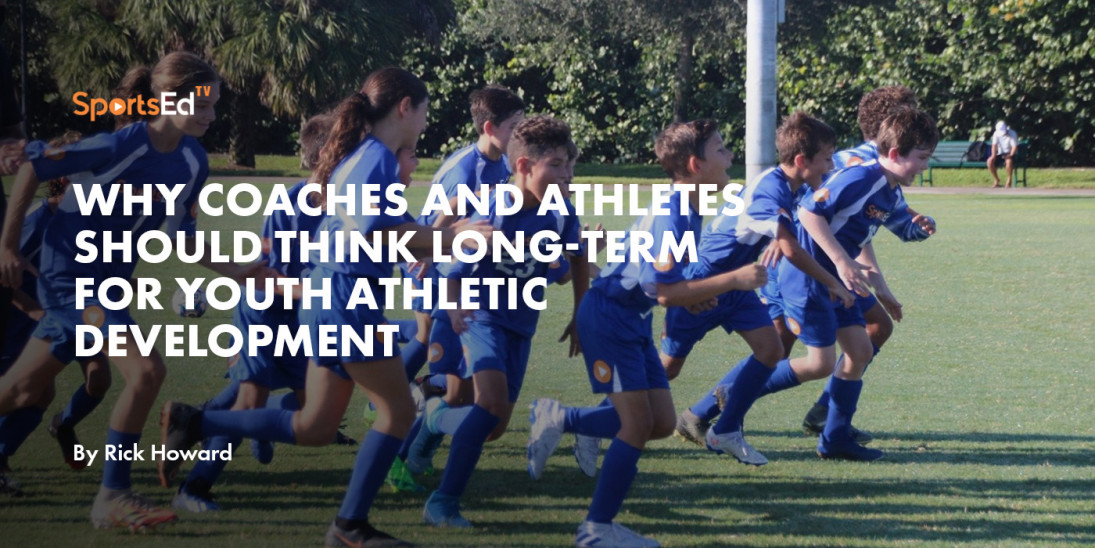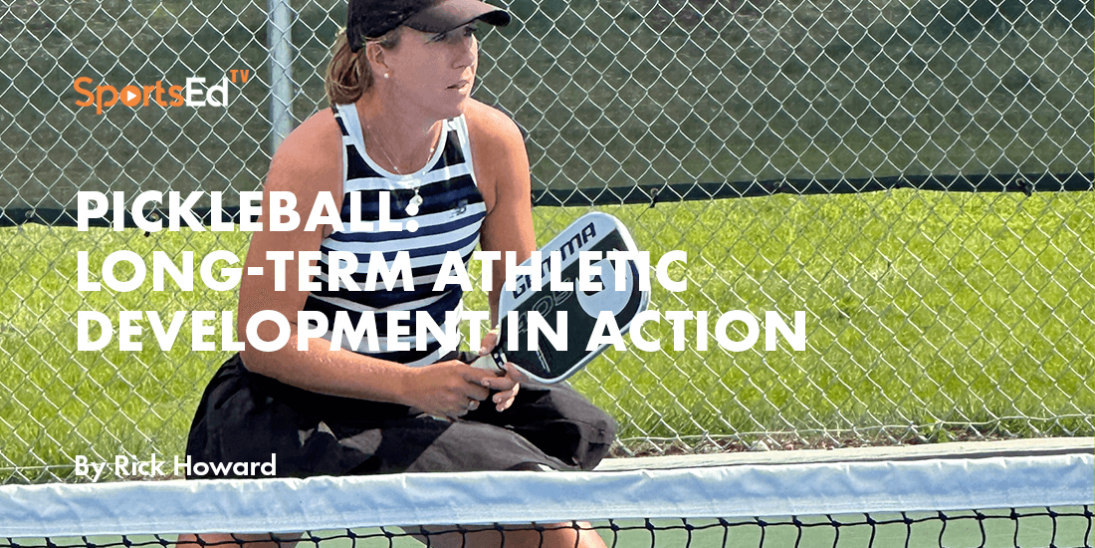Soccer
Welcome and thanks for visiting...

Why Coaches and Athletes Should Think Long-term for Youth Athletic Development.

Youth sports are often the “hook” that excites kids to stay active, reduce risky behaviors, and learn sportsmanship, conflict resolution, and fair play. Sadly, an adult-focused model of youth sports participation has led to early specialization, hyper-competitiveness, and burnout. Enjoyment of the thrills that youth sport can provide: developing new skills, social emotional learning, and having fun, can be lost in the misguided quest for college scholarships, trophies, and 15-minutes-of-fame. Luckily, a solution has been proposed that has made its way into the youth sports landscape but has not yet taken complete hold. The purpose of this article is to share why coaches and athletes should think long-term for youth athletic development.
Long-term athletic development (LTAD) has gained acceptance as a theoretical model of positive youth development, based on a variety of factors, such as the number of countries implementing an LTAD model, the perfect fit with physical literacy and the development of fundamental motor skills and muscle strength, and as a structured alternative to early sport specialization. Most LTAD models are largely based on the work of Istvan Balyi and Canadian Sport for Life, whose model has been replicated and adopted internationally. Balyi’s original model for LTAD was based on developmental stages with a playground-to-the-podium focus, meaning that from the earliest stages of development (0-6 years old), youngsters are groomed for elite performance (Olympic medals), with an alternate pathway of being active for a lifetime (Active for Life). More recently, the Canadian model has become more inclusive, with a focus on everyone’s experience in sport and physical activity.
The American Development Model (ADM), formulated by USA Hockey and adopted by all United States Olympic and Paralympic Committee National Governing Bodies, also helps develop pathways for excellence in sport and lifelong physical activity through increased development of youngsters through participation in sports, especially during the critical early development years, through age 12.
Long-term athletic development (LTAD) as a framework for positive youth development emphasizes muscle strength and motor skills through sport, physical activity, and physical education. As a framework, there is not one way that it must be done, but rather a multitude of ways we can help athletes of all shapes and sizes be the best version of themselves from cradle-to-grave.
LTAD as a cradle-to-grave concept is incredibly important. The opportunities to play and participate in organized sports and activities builds skills that can be used throughout the life course. The athlete in all of us should be encouraged as we continue our movement journey. Any gap, overuse, or negative experience can diminish the skill development and enjoyment of the sport or physical activity. While the subtleties of LTAD are in the timing of the stages, the recommendations for performance within each stage, and the psychosocial considerations within each stage, the real magic of LTAD is as a cradle-to-grave approach. The National Strength and Conditioning Association published a position statement that features 10 pillars of LTAD. These pillars focus largely on the importance of adequately developing motor skills and muscle strength because motor skill competence, motor skill self-efficacy, and fun are the three leading predictors of being physically active across the lifespan. Muscle strength is inextricably linked with motor skill development. Pillar 5 of the position statement says that the health and well-being of all youth are the central tenet of LTAD, fostering a physically active lifestyle beginning in infancy, and continuing across childhood and adolescence, throughout adulthood and into old age.
What has not been apparent in LTAD, especially with use of the term athlete, is an emphasis on keeping active for a lifetime, using play, fitness, and sports as the interwoven vehicles to accomplish this goal. An athlete as defined by Dan Bowerman, founder of Nike, is anyone with a body. Tom Farrey and The Aspen Institute’s Project Play also consider everyone an athlete. Too often, a preconceived notion of an athlete being an elite or very high performing participant in sports, has caused several groups to miss out on how participation in sports at all levels of play can instill the confidence and competence for kids to want to continue to be physically active for the rest of their lives. No matter what the framework is called—long-term athletic development, long-term player development, long-term participant development, or long-term sport and physical activity development, the end goal of providing all kids the opportunity to develop their skills and abilities in an inviting and fun environment is tantamount to the success of youth sports now and continued physical literacy throughout the lifespan.
We need child-centered instruction to help guide kids at their specific developmental level. This is an important point, too, as growth and development are not linear and is not the same for all kids. For example, a group of eight-year-olds are, in terms of biological development, up to two years on either side of eight years old, so you would really be working with a group of 6-10-year-olds! We cannot assume (we know what happens when we do that!) that kids will automatically develop skills without qualified instruction much the same way that kids won’t necessarily learn to read by visiting the library. Most of us would never consider dropping off young children at the library to learn to read without primary knowledge of letters, words, sentences, etc., yet we often sign kids up for sports when they do not yet have the requisite movement skills to play.
By defining long-term as not just “peak by Friday,” the Olympic podium pathway, or for the youth population only, it creates opportunities for play, fitness, AND sport across the lifespan. We know that as kids move along the sports continuum, the opportunities to participate decline. Compare how many teams there are available for youth in “recreational” leagues as children vs. how many opportunities are available in college and beyond. Most current LTAD models do not include a framework for LTAD as a fully integrated cradle-to-grave concept. Therefore, we still are “dealing” with parents, aggressively promoting one sport over another, and trying to protect our turf. By broadening opportunities for athletes of all ages to be involved we generate adult role models for their children, promote the value of play throughout society, and discover how sharing financial and human resources opens up the wide world of sports to more participants.

For adults, we have pigeon-holed them into “lifetime” fitness activities, not the sport, game, or activity of their choosing. This is in part due to the fact that most adults did not develop movement competency at younger ages to have the ability to select their favorite pursuit. The cradle-to-grave LTAD model provides those opportunities. If we recognize that sports, as structured play, is but one of three key components of positive youth development, then all three types of play will be interwoven throughout the model. If we embrace that we as coaches have a huge influence on our athletes not only in sport but in aiming toward the high performance end of the wellness continuum, then we will strive to develop all components of the Wellness Wheel for all people across the lifespan.
The take home message is that there needs to be a shared vision for an evidence-based plan in place to help everyone at every age develop to the best of their ability, within their given level of endowment (the best plan may not help a 7-footer become an elite gymnast, for example). Make sure you ask youth sport coaches and program administrators questions about long-term athletic development and specific policies and strategies to help promote athleticism for a lifetime. For adults, think honestly about your skill set, your level of basic strength, and the total amount of time you spend playing sports, working out, and being physically active.




